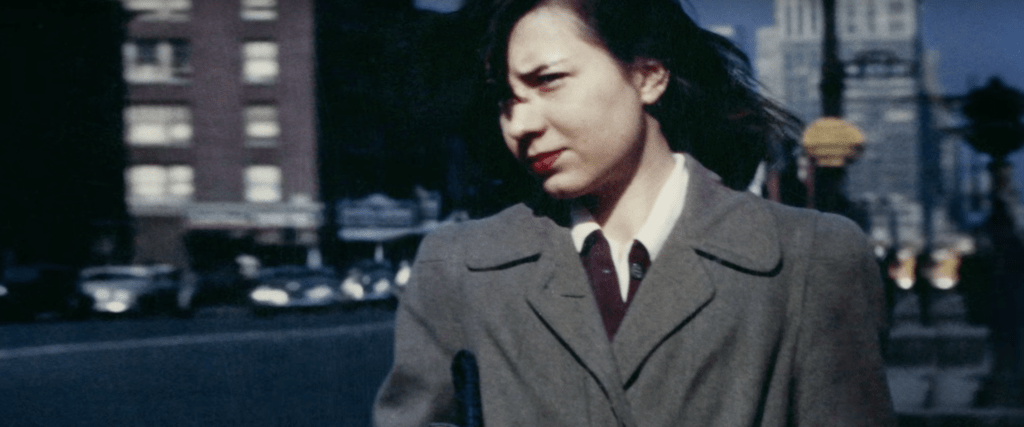
Loving Highsmith, a 2022 documentary directed by Swiss screenwriter Eva Vitija, captures the life of Patricia Highsmith through the eyes of those who loved her. Patricia Highsmith was the writer behind one of the first lesbian novels with a happy ending, The Price of Salt (1952). It was written under the pen name “Claire Morgan,” until Pat acknowledged it as her creation later in life. The novel was again popularized in the 2015 film, Carol.
Loving Highsmith is both candid and overly reverent, in the way most of us glorify the ones we love because brutal honesty feels like a betrayal. Perhaps the documentary’s title allows for the omission of her many faults. If it were called “Knowing Highsmith,” my review would be less forgiving.
To love somebody, should we resist acknowledging their complete, gross humanity? Should a documentary be concerned less with loving somebody and more with the cruel truth? Do we need to love somebody from history in order to enjoy and learn from their story?
In 2022, the documentary might not have aired if it mentioned Highsmith’s blemishes while still redeeming her humanity. The way Pat’s life is told today reflects our society’s inability to acknowledge nuance: she’s either a monster for her unacceptable beliefs and behaviour or they’re simply not mentioned at all.
Already knowing a bit about Pat Highsmith, the documentary taught me much more. Patricia Highsmith’s life is a case of disturbing poetry that I’m sure many lesbians can relate to. Namely, Patricia Highsmith lived a life plagued by women who betrayed her for men, which was the source of irreparable unhappiness.
First, it was her mother, who left Pat in Texas when she was a baby, to move to New York with her stepfather. Pat’s mother removed her from her beloved grandmother and took her to New York when she was six years old. Pat sought after her mother’s love but never received much tenderness. In fact, her mother heckled Pat with homophobic taunts, calling her a “lez.” Knowing Pat wanted her love so desperately, she asked Pat why, if she loved her mother so much, she wouldn’t just dress like a lady.
As an adult, Pat had The Price of Salt published under a pen name, but her mother told people it was Pat. Pat realized that the only way her mother could have known she was the writer was if her mother searched through her things when Pat lent her mother and stepfather her apartment. This being the last betrayal, Pat started legally untying herself from her mother.
The betrayal from women didn’t end there. Pat fell in love with a married woman named Caroline. In the documentary, she is noted as the most important woman in Pat’s life: at the front of her diary, the writer listed all the places she’d lived in before and the final one was “Caroline.” Believing Caroline would one day leave her husband, Pat was at her most vulnerable. She allowed herself to fall in love.
But Caroline wouldn’t tell or leave her husband. Referring to their love affairs in France, Pat wrote, “Paris should be kept quiet, no matter what.” Pat scorned the strong sense of convention in Caroline, understanding that she would never be happy without a husband.
Pat felt unloved – how could Caroline feel the same but not surrender the same? She wrote about her refusal to take second place, despite loving the woman as much as she did. Pat began calling the relationship, and Caroline, sadistic. “She will not break it off, ever,” Pat wrote, “But I did.”
Pat describes selling her home near Caroline as “like an abortion.” It was as if she and Caroline had fallen pregnant with something they loved but Pat couldn’t carry it to full term because of Caroline’s “sadism.” Ironically, Pat’s mother divorced her father before Pat was born and drank turpentine in an effort to abort her.
Pat was different after Caroline. She couldn’t sleep, eat, or write for periods at a time.
Unfortunately, Caroline died shortly before the documentary makers wished to contact her for an interview. Her identity has largely been kept a secret to respect her family. I understand it but feel angry on Highsmith’s behalf. The love Pat and Caroline shared is still disrespected for maintaining safe, heterosexual domesticity. It’s bullshit.
The documentary offers more than poetic insights into Patricia Highsmith’s life: she becomes a starting point to discuss various topics connected to the writer. One of the topics is lesbian and gay life in the 1950s. Fellow writer and Pat’s partner for a time, Marijane Meaker, speaks about how discretion was of utmost importance back then. MJ was banned from a gay bar in NYC because she gave a taxi driver the address, rather than getting off the train a station away and walking there like the rest of the patrons did.
MJ also speaks about how every lesbian she knew had tried to “stop” their homosexuality. This included Patricia Highsmith who describes the efforts to sleep with men as “steel wool to the face.” At one point, Pat even went to a doctor to “fix” her homosexuality.
Loving Highsmith is a great documentary if you prefer a palatable version of history. If you prefer learning about a person from history like they are a friend, not a deeply flawed human like everybody is, then this film is for you. The portrait of Pat Highsmith is incomplete in the way it omits many of her wrongdoings. In saying that, Patricia Highsmith was so complicated –she was both victim and assailant– that I am unsure a “Knowing Highsmith” sequel is possible with the language or culture available to us.



